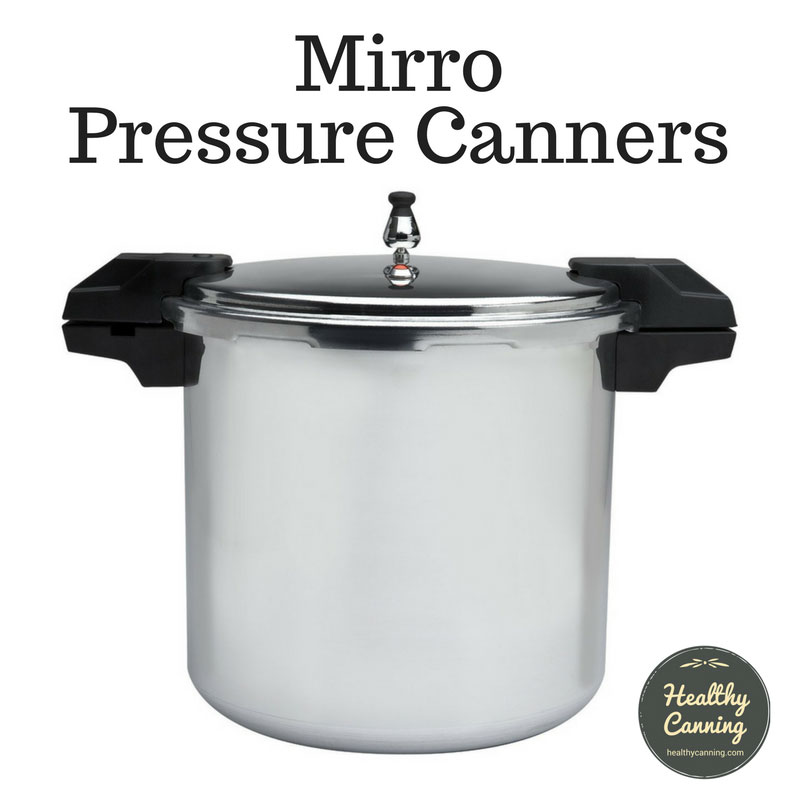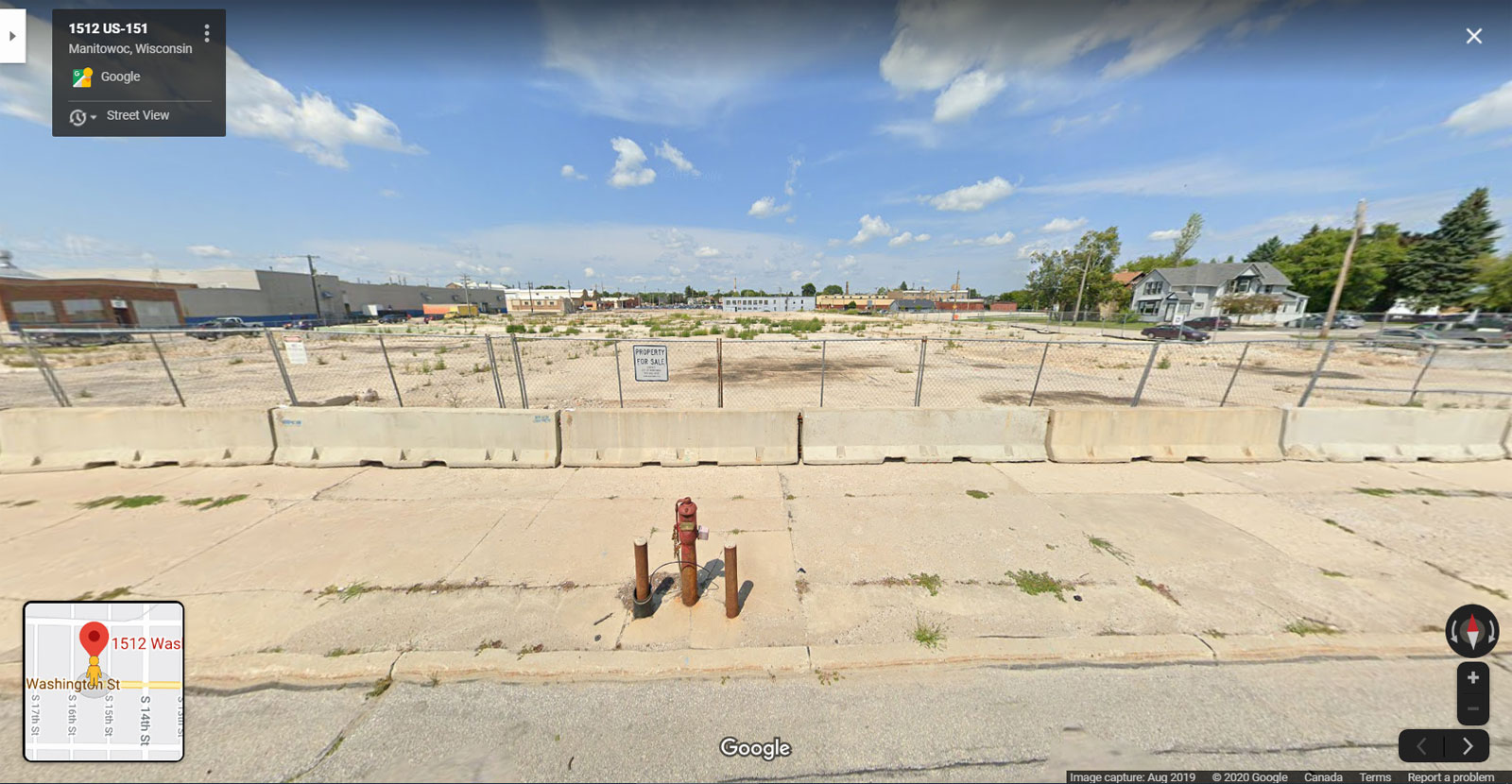

Mirro makes two models of pressure canners: a 16 qt and a 22 qt. Both of these models are weighted-gauge canners, with no dials on top of the machines. It’s unclear where these are made.
Contents hideThe Mirro company started with the merger of three aluminum companies in 1909; the merged company named itself the “Aluminum Goods Manufacturing Company.” [1] ”New Company to Embrace Three”. Manitowoc Daily Herald. March 8, 1909. p. 1. In 1917, the company introduced the Mirro line of goods. [2] James M. Rock. “A Growth Industry: The Wisconsin Aluminum Cookware Industry, 1893-1920”. Wisconsin Magazine of History, vol. 55, no. 2 (Winter, 1971-1972): 86-99. By 1957, the company had become so synonymous with these goods that it renamed itself the “Mirro Aluminum Company”. [3] ”Would Change Goods’ Official Name to Mirro”. Two Rivers Reporter. March 20, 1957. p. 2. Mirro was located at 1512 Washington Street in Manitowoc, Wisconsin.
In 1983, Mirro was acquired by The Newell Companies (who also owned Ball, Bernardin and Kerr).
In 2004, a company named Global Home Products purchased Mirro, along with Regal and Wear-Ever brands (founded 1888), and combined them into The WearEver Company. [4] Description to photo of Juicer. Museums of Mississauga, Canada. Identifier: 2005.6.11, Item 1932. Accessed March 2020 at http://www.mississauga.ca/portal/discover/historicimagesgallery
In 2006, Groupe SEB from France bought the “Mirro Wearever” company in a bankruptcy sale. The Mirro line of goods became its entry-level cookware, joining T-Fal (mid-range) and All-Clad and Krups (upper end).
Production of Mirro was moved out of the country in 2001. Its admin offices were moved out of Manitowoc, Wisconsin at the same time. In 2015, the entire former plant was razed to the ground. [5] ”History comes tumbling down”. Gannett. htrnews. December 30, 2014. Retrieved January 25, 2015 from https://www.htrnews.com/story/home/2014/12/30/history-comes-tumbling/21078275/.

Site of former Mirro plant, 1512 Washington St, Manitowoc, Wisconsin
At time of writing (spring 2020), Mirro is still part of Groupe SEB. We do not know where the manufacturing is done, nor where the customer service is handled from.
Nor is it known when the last time was that the company invested any resources in pressure canning research.
Mirro has changed hands many times in the past few decades. No doubt, there has been loss of in-house expertise and experience, including in its pressure canning line, and without the people to maintain them, the documentation has fallen far behind. This may account for some of the confusion you will encounter about Mirro pressure canners.
As of 2020, Mirro sells what it calls “pressure cookers” in four sizes: 8 quarts, 9 quarts, 16 quarts and 22 quarts (US quarts.) [Other cookware is also made under the Mirro name.]
The “current” (as of 2020) Mirro pressure cooker / canner manual is undated; it appears to be from the early 2000s. The manual was written for their 8, 12 and 22 quarts (US) pressure cooker / canner models. Since at least 2017 the choices have changed: the sizes they now offer in pressure cookers are 8, 9, 16 and 22 quarts (US.)
On page 4 of that undated manual, they appear to identify the 8 quart, 12 quart and 22 quart models as pressure canners. “Cooking rack…to place jars off the bottom of the 8, 12 and 22 Qt. (US) canners.” On page 34 of the same manual, they write: “CAUTION: Pressure can only in models with selective control (5, 10, 15 lbs.) only. Do not try to can in single-control model.” It may be that at the time of writing their 8 quart came with a selective control; now (2020), it does not – only a single 10 lb pressure choice.
The fact is, their manual certainly did seem to refer to their 8 and 12 quart models as pressure canners (see chart below under “Manual”.) The 8 quart would not hold any quart jars; the 12 quart model would hold 7.
The USDA pressure canning recommendations only support pressure canners large enough to hold 4 x 1 US quart (1 litre) jars at once. [6] The reason for this is that warm-up and cool-down times in the canner are counted as part of processing time; a smaller canner would heat up too fast, and cool down too fast. So even if the person who wrote the manual for Mirro classed the old 8 quart as a pressure canner, the USDA never would. And whoever wrote the manual for Mirro is probably long gone after all the company buyouts and no longer around to accept responsibility for that.
This means that of the older pressure “pots” referred to in that manual, the 8 quart does not qualify as acceptable for pressure canning; the 12 quart would.
And it means from their currently-sold range (dating from at least 2017, current as of 2020) that the 16 quart and 22 quart models are the ones that are acceptable pots to do pressure canning in.
As of 2020, Mirro makes two models of pressure canners: a 16 qt and a 22 qt. Both of these models are weighted-gauge canners, with no dials on top of the machines. Each comes with three separate weights: 5, 10 and 15 lbs.
Please note that as of 2020, to the best of our knowledge, Mirro still does NOT recommend either model for use on glass-topped stoves. “Mirro pressure cooker/canners are not designed to be used on a flat top (glass or ceramic) range because they have concave bottoms. On a flat top range, a large area of the bottom will be out of contact with the heat source, preventing the transfer of heat and the buildup of pressure.” [7] Swanson, Marilyn A. Using and caring for your pressure canner. Pacific Northwest Extension: University of Idaho · Oregon State University · Washington State University, 2013. PNW421. Page 9.
1. 16 US quart (model 92116): Can hold 7 x 1 litre (1 US quart) jars
2. A taller 22 US quart canner (model 92122.): Can hold 7 x 1 litre (1 US quart) jars or 2 layers of 8 x ½ litre (US pint) jars, for a total of 16 x ½ litre (US pint) jars at one time. Comes with a stacking rack included in the cost.